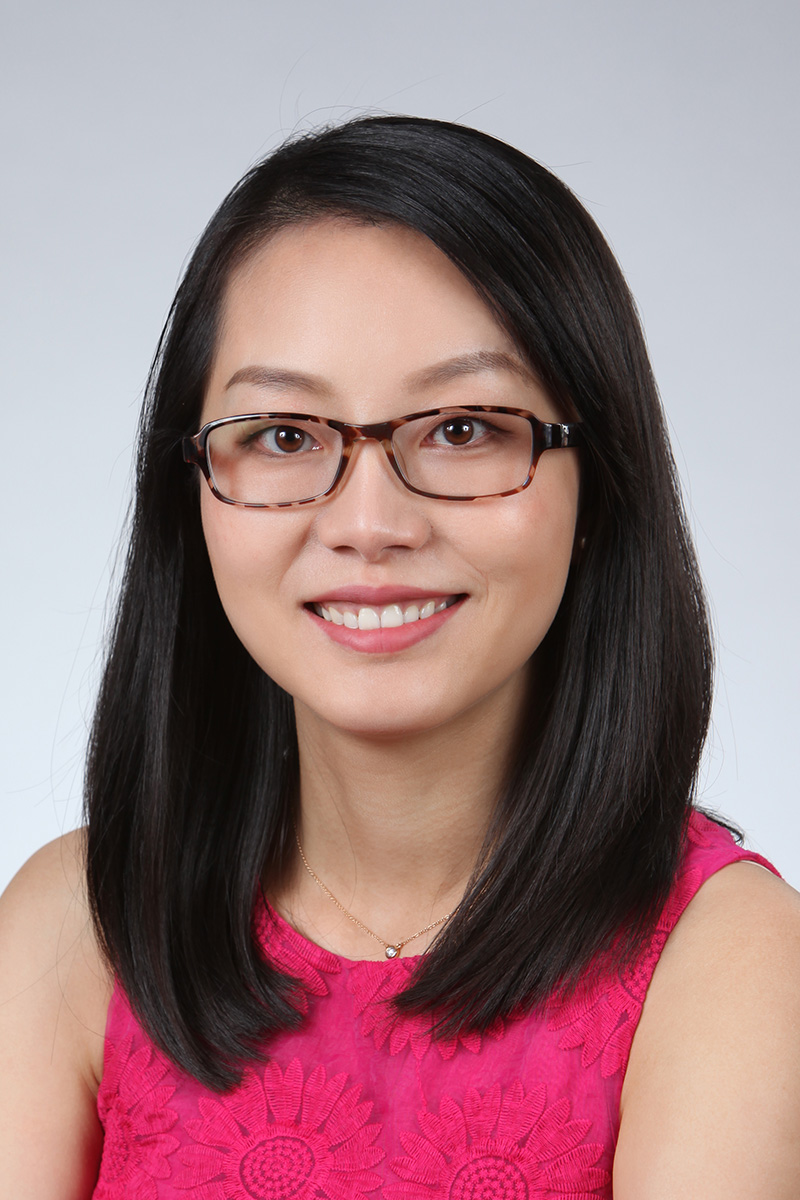王丹教授
 助理教授
助理教授
電話: 3943 0681
電郵: Email住址會使用灌水程式保護機制。你需要啟動Javascript才能觀看它
地址:
Room 422A, Lo Kwee-Seong Integrated Biomedical Sci. Bldg, Area 39, CUHK
ORCID: https://orcid.org/0000-0002-5934-9085
個人簡介
Prof. WANG Dan (王丹) completed her B.S and M.S in Dental Medicine from Sun Yat-Sen Medical University, Ph.D. from the Dental School of University of Pittsburgh, and her postdoctoral training at Stanford University. She joined CUHK in Aug 2017 as a Research Assistant Professor with appointments in the School of Biomedical Sciences (SBS), the Institute for Tissue Engineering and Regenerative Medicine (iTERM), and Department of Orthopaedics & Traumatology (ORT; by courtesy).
Prof. Wang has extensive training that spans across diverse disciplines, including basic and pre-clinical research as well as her medical practice, which have both expanded the frontiers of biomedical knowledge and advanced patient care. During her doctoral training, Prof. Wang secured a Ph.D. scholarship from the University of Pittsburgh and studied the contributions of Toll-Like Receptors (TLRs) to skull bone healing in various clinically relevant animal models. This work has received recognition in the form of a Student Research Award from the American Association for Dental Research (2014, Pittsburgh chapter). During her postdoctoral research at Stanford University, Prof. Wang identified genes responsible for rapid bone growth and differentiation in deer antler regeneration, which received widespread media coverage, as well as developed a phototunable polyurethane biomaterial for bone-to-tendon repair, which is currently under further pre-clinical development. In her current research program at CUHK, Prof. Wang and her team are focused on elucidating the contributions of extracellular matrix (ECM) components in the stem cell microenvironment and applying such knowledge towards the engineering of novel biomaterials for musculoskeletal tissue repair. Prof. Wang has obtained local and national research support and her work has been published in prestigious journals such as Advanced Functional Materials, Biomaterials, Nature Publishing Group Asia Materials, Stem Cell Research & Therapy, as well as in book chapters.
- ECM biology and ECM-based biomaterial development: Investigating cell and ECM interactions and developing ECM-mimetic biomaterials for bone and tendon repair.
- Exosome-based cell free therapy: Advancing stem cell-derived exosome technologies as cell-free therapies for tissue repair.
- Immunomodulatory therapy. Development of immunomodulatory biomaterials to enhance tissue regeneration.
- Wang, D.#, Ker, D.F.E.#., Ng, K.W., Li, K., Gharaibeh, B., Safran, M., Cheung, E., Campbell, P.G., Weiss, L.E, & Yang, Y.P. (2021). Combinatorial Mechanical-Gradation and Growth Factor-Biopatterning Strategy to Spatially Control Bone-Tendon-like Cell Differentiation and Tissue Formation. Nature Publishing Group Asia Materials, 13:26. Impact factor: 10.481.
- Wang, D.#, Zhang, X#, Huang, S.T., Liu, Y., Fu, S.C., Mak, K.L., Blocki, A.M., Yung, S.H., Tuan, R.S., & Ker, D.F.E. (2021). Engineering Multi-Tissue Units for Regenerative Medicine: Bone-Tendon-Muscle Units of the Rotator Cuff. Biomaterials, 120789, Impact factor: 12.479.
- Assunção, M., Yiu, C.H.K., Wan, H.Y., Wang, D., Ker, D.F.E., Tuan, R.S., & Blocki, A. (2021). Hyaluronic acid drives mesenchymal stromal cell-derived extracellular matrix assembly by promoting fibronectin fibrillogenesis. Journal of Materials Chemistry B , Accepted. Online ahead of print. Impact factor: 6.331.
- Zhao, B.K., Peng, Q., Poon, E.H.L., Chen, F., Zhou, R., Shang, G.W., Wang, D., Xu, Y.Z., Qi, S.C., & Wang, R.R. (2021). Leonurine promotes the osteoblast differentiation of rat BMSCs by activation of autophagy via the PI3K/Akt/mTOR pathway. Frontiers in Bioengineering and Biotechnology , 9:615191. Impact factor: 5.89.
- Wang, D., Pun, C.C.M., Huang, S., Tang, T.C.M., Ho, K.K.W., Rothrauff, B.B., Yung, P.S.H., Blocki, A.M., Ker, E.D.F., & Tuan, R.S. (2020). Tendon-derived extracellular matrix induces mesenchymal stem cell tenogenesis via an integrin/transforming growth factor-β crosstalk-mediated mechanism. Federation of American Societies for Experimental Biology Journal , 34(6):8172-8186. Impact factor: 5.191.
- Wang, D., Gilbert, J.R., Zhang, X., Zhao, B.K., Ker, D.F.E., & Cooper, G.M. (2020). Long Bone versus Calvarial Bone: Development, Structure, Healing and Tissue Engineering Strategies. Tissue Engineering Part B , 26(1):46-63. Impact factor: 6.089.
- Ker, D.F.E., Wang, D., Sharma, S., Zhang, B., Passarelli, B., Neff, N., Li, C., Maloney, W., Quake, S., & Yang, Y.P. (2018). Identifying deer antler uhrf1 proliferation and s100a10 mineralization genes using comparative RNA-seq. Stem Cell Research & Therapy, 9(1), 292, Impact factor: 6.832.
- Ker, D.F.E.#, Wang, D.#, Behn, A.W., Wang, E.T.H., Zhang, X., Zhou, B.Y., Mercado-Pagán, A.E., Kim, S., Kleimeyer, J., Gharaibeh, B., Shanjani, Y., Nelson, D., Safran, M., Cheung, E., Campbell, P., & Yang, Y.P. (2018). Functionally graded, bone- and tendon-like polyurethane for rotator cuff repair. Advanced Functional Materials , 28(20):1707107. Impact factor: 18. 808.
- Wang, D., Gilbert ,J.R., Taylor, G.M., Sodhi, C.P., Hackam, D.J., Losee, J.E., Billiar, T.R., & Cooper, G.M. (2017). TLR4 inactivation in myeloid cells accelerates bone healing of a calvarial defect model in mouse. Plastic and Reconstructive Surgery, 140(2), 296e-306e, Impact factor: 4.735.
- Wang, D., Taylor, G.M., Gilbert, J.R., Sodhi, C.P., Hackam, D.J., Losee, J.E., Billiar, T.R., & Cooper, G.M. (2017). Enhanced calvarial bone healing in CD-11c-TLR4-/- and Myd88-/- mice. Plastic and Reconstructive Surgery, 139(4), 933e-940e, Impact factor: 4.735.
# Co-first author
- GRF, RGC 14118620 [Principal Investigator]: “Development of tendon extracellular matrix-based approach for functional tendon repair”.
- GRF, RGC 14121121 [Principal Investigator]: “Tendon extracellular matrix (ECM): identification of pro-tenogenic components and engineering of an ECM-mimetic biomaterial for tendon repair”.
- HMRF, HMRF 07180686 [Principal Investigator]: “Bone allograft revitalization via immunomodulatory and pro-regenerative strategies for enhanced fracture repair”.
- ITF Tier 3, ITC No. ITS/333/18 [Principal Investigator]: “Developmentally-inspired biomaterials for tendon repair”.
- The Chinese University of Hong Kong, CUHK Direct grant, 2018.092 [Principal Investigator]: “Development of QHM Polyurethane Hydrogel for Soft Tissue Repair”.
- General Program of NSFC 2017, 81771035 [Principal Investigator]: “Investigating the role of HMGB1/TLR4-mediated osteoclastogenesis in allograft remodeling”.
- Young Scientists of China of NSFC, 8102141 [Principal Investigator]: “Cell necrosis promotes bone regeneration by virtue of an inflammatory response through TLR4 signal pathway”.
